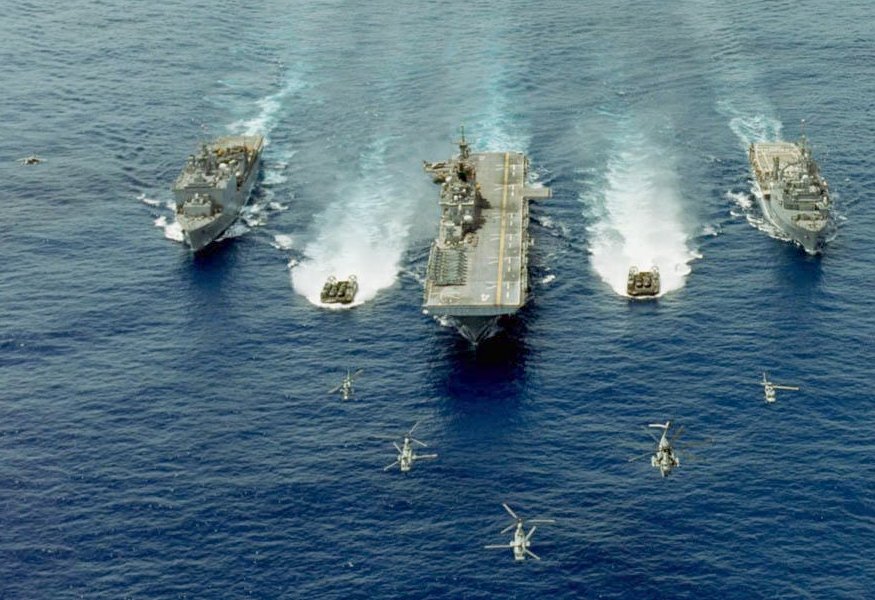Amphibious Forces

An Amphibious Ready Group (ARG) which carries a Marine Expeditionary Unit (MEU)
The aspiration of the Reagan era 600 ship Navy was the ability to lift 1.5 Marine Amphibious Forces (MEF) and deploy that force on two hostile shores simultaneously, while at the same time modernizing amphibious capability. A MEF is a large force (32,500 troops + equipment) focused on a full Marine Division supported by an air group and a logistics element able to support that force for about 30 days. This aspiration was never met in the real or Northern Fury world. Historically, the requirement was refined downward in 1993 to 2.5 Marine Expeditionary Brigades (MEB). In Northern Fury, a combination of retaining older ships in service and building newer ships went a good way to achieving the original goal but gaps remained. In the Atlantic, the amphibious force was able to lift and assault with about 60% of a MEF, plus a Marine Expeditionary Unit (MEU) permanently on station in the Mediterranean. In the Pacific, the capacity was slightly smaller and split between the West Coast and forward based in Japan; there was also a permanently tasked MEU in the Indian Ocean. In total the Northern Fury USN can lift about 1.1 MEFs, a capacity that will demand priorities to be set; the familiar discussion of ‘Europe first’ will ring in the halls of the Pentagon once more.
1994 finds the USMC in transition between older ‘Amphibious’ doctrine that has larger forces deploying to its evolving ‘Expeditionary’ doctrine with smaller self contained units or Marine Air/Ground Task Forces (MAGTF). Both doctrines will be needed in the first months of the war.
Amphibious forces make a late entry into the Northern Fury Campaign. An early appearance is LPD 14 USS Trenton returning from rotating prepositioned equipment in Norway, she is now trying to escape the Soviet advances to seize Iceland early in the war. The only elements in play at the start are two forward deployed Amphibious Ready Groups – USS Peleliu with 13th MEU embarked in the Indian Ocean and USS Kearsarge with 22nd MEU embarked in the Mediterranean. At war start the bulk of the amphibious forces in the Atlantic are tied up in Norfolk and Little Creek Virginia, but deploy within the first week to conduct a major amphibious operation on Iceland with two full Marine Regiments as part of 2nd MEF.
In the Pacific 3rd MEF, located mostly on Okinawa assumes a defensive posture and assist the Japanese Defence Forces (JDF) in repelling Soviet aggression. An Amphibious TG based on LHA-3 USS Belleau Wood was withdrawn under cover of land and carrier based air forces first to the Philippines and then to Hawaii. Some elements of 3rd MEF deployed by air to South Korea before that air bridge was severed. 13th MEU remains in the Indian Ocean embarked on the USS Peleliu ARG and has a role to play opening up access to the Red Sea. The remainder of 1st MEF is preparing to conduct operations in the Philippines area.
4th (Reserve) Marine Division has had multiple tasks. Initially they provided several thousand individuals to 1st and 2nd Marines to fill gaps, then several specialist elements such as most of 14th Marine Regt (Artillery), 4th Recon Bn and 4th Tank Bn were CHOP’d to 2nd Marines. 25th Marine Regt is training to reinforce 2nd MEF while 23rd Marine Regt, now gutted after providing augmentation, is conducting comprehensive training with new recruits and will likely reinforce 1st or 3rd MEF.